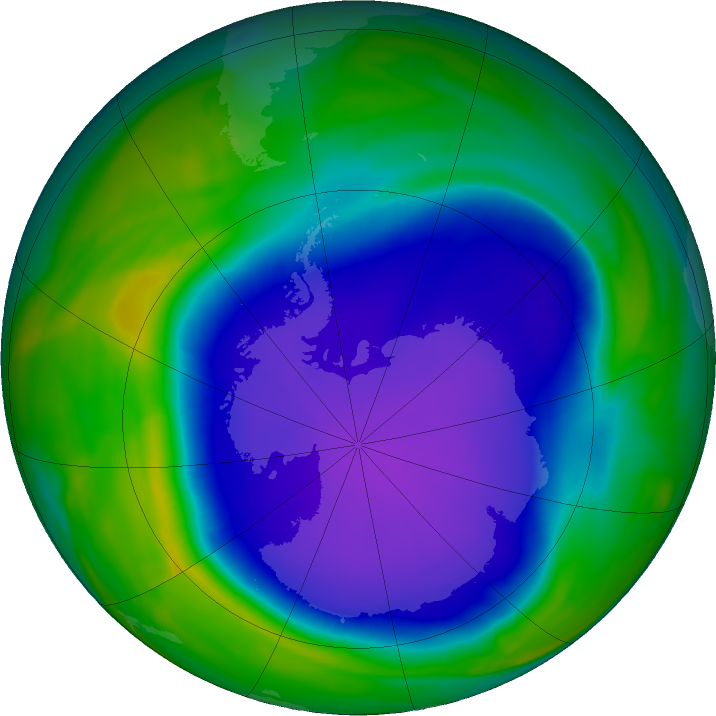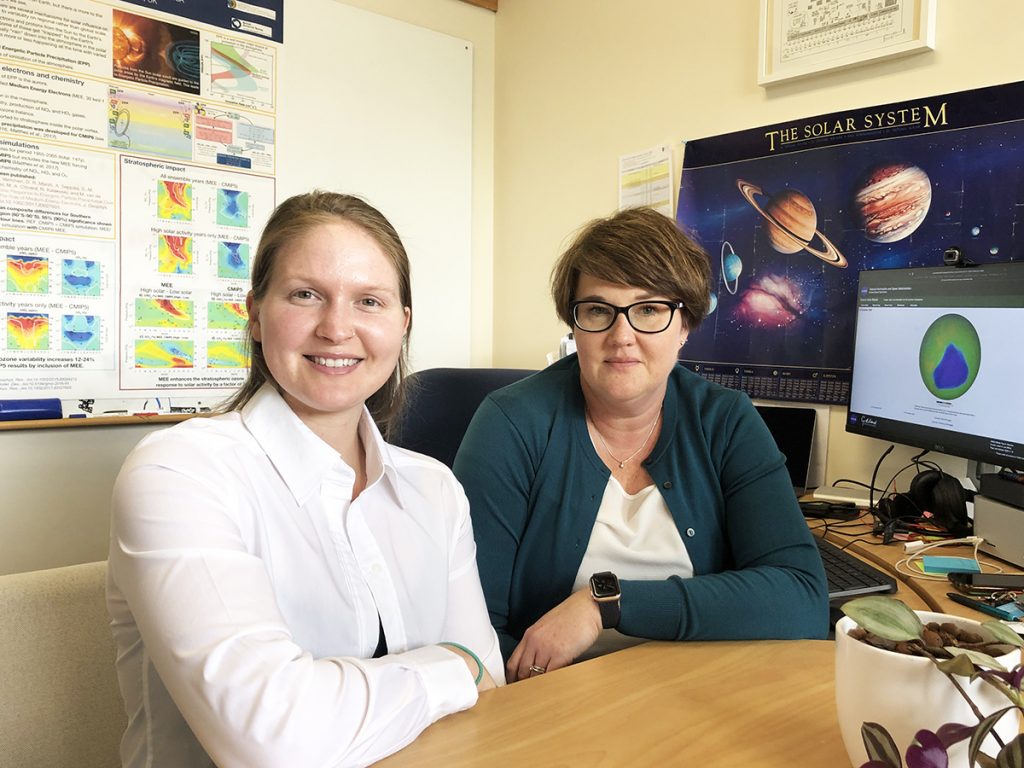 Despite public perception, the Antarctic ozone hole has been remarkably massive and long-lived over the past years, and University of Otago researchers believe there are factors beyond CFCs that are contributing. In their ground breaking work just published in Nature Communications, University of Otago Physicists Hannah Kessenich, Annika Seppälä, and Craig Rodger analysed ozone levels from 2004 to 2022, and found there is much less ozone in the centre of the Antarctic ozone hole compared to 19 years ago. While overall Antarctic ozone is recovering due to the Montreal Protocol that banned the harmful ozone depleting CFCs, the slow ozone recovery is focused on the outer parts of the ozone hole.
Despite public perception, the Antarctic ozone hole has been remarkably massive and long-lived over the past years, and University of Otago researchers believe there are factors beyond CFCs that are contributing. In their ground breaking work just published in Nature Communications, University of Otago Physicists Hannah Kessenich, Annika Seppälä, and Craig Rodger analysed ozone levels from 2004 to 2022, and found there is much less ozone in the centre of the Antarctic ozone hole compared to 19 years ago. While overall Antarctic ozone is recovering due to the Montreal Protocol that banned the harmful ozone depleting CFCs, the slow ozone recovery is focused on the outer parts of the ozone hole.
The Otago team used 20 years of satellite data from the Microwave Limb Sounder instrument on the NASA Aura satellite (https://aura.gsfc.nasa.gov) to identify what drivers the continued ozone depletion in the ozone hole core, and their study highlights the pressing need for comprehensive and ongoing monitoring of the ozone hole due to the critical role the ozone layer plays in protecting life on earth.

“Not only have we had large ozone holes recently, but the ozone hole also deeper throughout at its core most of spring. We made connections between this drop in ozone and changes in the air that is arriving into the polar stratosphere above Antarctica. This reveals, we shouldn’t just rely on reducing CFC resulting in the eventual recovery of the ozone hole, but we need to keep an eye on the how things evolve from one year to another and through Antarctic winter and spring” says lead author Hannah Kessenich.
While the Montreal Protocol on Substances that Deplete the Ozone Layer, which has been in place since 1989, regulates the production and consumption of man-made chemicals known to deplete the ozone, the researchers explain that other complex factors are also contributing to the ozone hole.
“While the Montreal Protocol has vastly improved our situation with CFCs destroying ozone, and recovery is confirmed in parts of the ozone hole, so far this recovery is not present at the very core of the ozone hole. With a number of years in the past decade experiencing some of the largest ozone holes our work will hopefully highlight some of the contributors that continue to influence ozone levels.”
The story took on a life of its own in the world’s media, some of which reported quite alarming headlines to the researchers surprise.
“Our results do not contradict overall ozone recovery at all, in fact we clearly observed that ozone is increasing in parts of the Antarctic atmosphere, and that overall, the ozone hole is opening later than it used to” says Annika Seppälä. “What we found was that the very core of the ozone hole has continued on a decline, and that air arriving from the Antarctic mesosphere may play a part in this.”
The importance of their findings and the high level of public interest has been highlighted by many articles in popular news media.
News Coverage
- Ozone hole findings surprise researcher , Otago Daily Times
- Antarctica ozone hole: How the changes could impact New Zealand, NewsHub – featuring Hannah live on TV3’s AM show!
-
Study highlights need to keep an eye on the ozone hole, Eureka-Alert
Research group
To find out more about the research visit the Atmosphere and Climate Group
Publication
Potential drivers of the recent large Antarctic ozone holes
Hannah E. Kessenich, Annika Seppälä, and Craig J. Rodger, Nature Communications